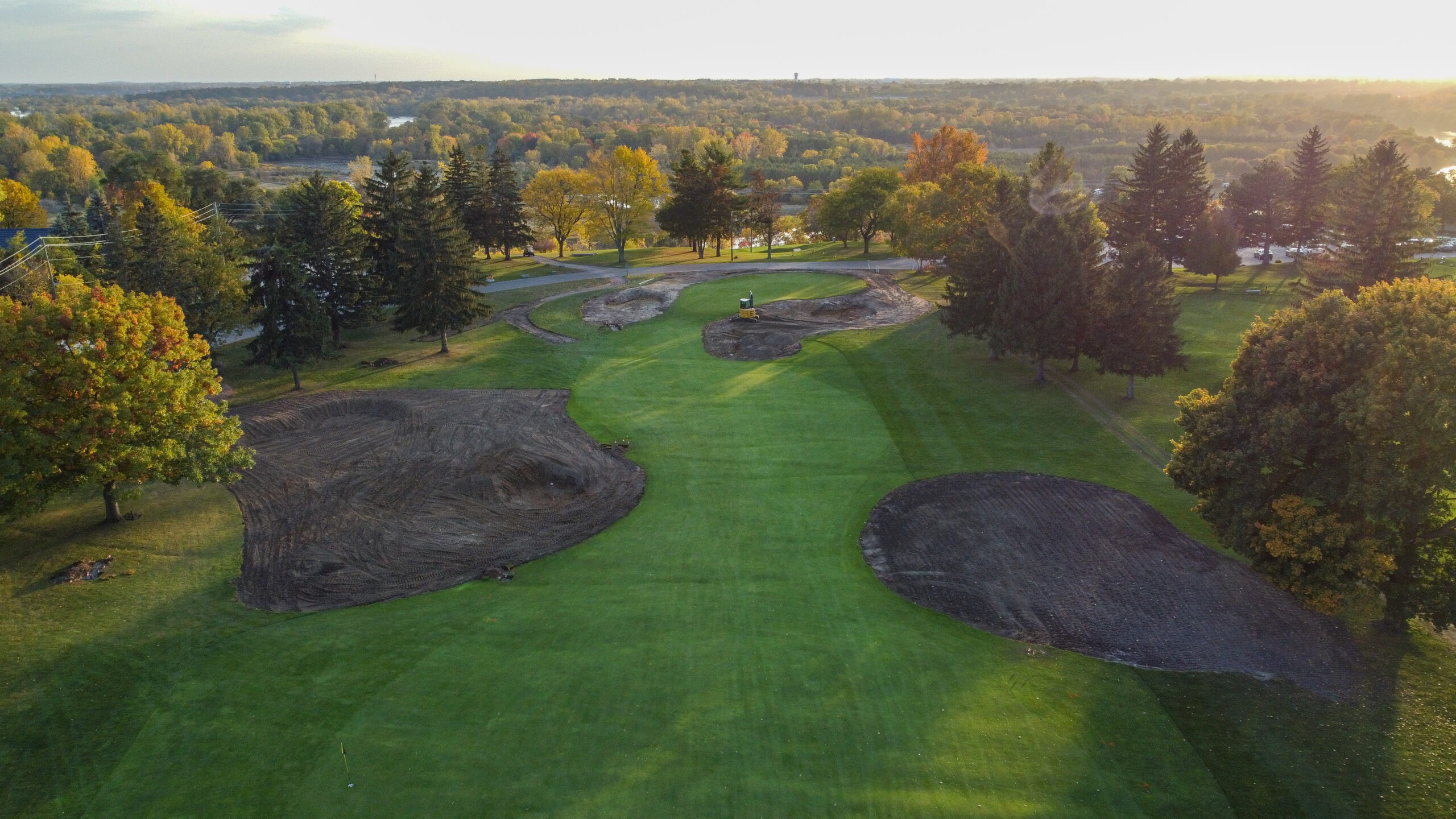9:30PM and I finally get to take my socks off after a long day walking around an expansive property filled with golf before golf. In this instance, I am at Cabot Citrus Farms taking photographs and exploring, learning, and enjoying my time in Florida on the precipice of the 2023 Canadian golf season.
I have been here twice beforehand, so I knew what I was getting myself into. Two weeks ago, I was at Bandon Dunes’s 7th course from Whitman, Axland, and Cutten, where Keith Cutten told me to bring boots because we were hiking through the unedited sand dunes of the Pacific Coast. In contrast, Citrus Farms was once a golf course and they have made good progress on it—grass is down on a few holes, in fact—so I knew I didn’t necessarily need boots. I am an Air Force One sneaker kind of guy, which is comfortable, albeit heavier and not as breathable than one would think or hope. It rides lower than my ankle bone, and although I wore them with success in February, it seems more sand got into my shoes this time around. I dumped my shoes out twice already—once in the morning following a morning walk during golden hour, and once again on a walk around taking a lot at the sod being laid on the opening four holes on The Ten. Even so, taking my socks off in my hotel room reveals the sounds and splashes of sand hitting my hotel room floor. Like going to the beach, the sand never leaves and it usually resides where you don’t want it (in between my toes, for example).

Ah, the joys of walking sand before it becomes golf. This “problem” is not so much of a problem as it is an annoyance, and even then, it is the beginnings of a good golf course so it’s easy to overlook in the grand scheme of things. The first checkbox to hopefully check off when finding sites for golf is sand. If found, that course automatically has a leg up on its contemporaries; it drains and plays better than clay. It should come as no surprise that the majority of golf courses in the World Top 100 are a sandy base. Architects found this out a long time ago on the links courses not suitable for farming because of the soil composition, but perhaps that was pure luck of the draw.
The last seven or so months have really taken off for such visits for me on my personal and professional travels, including Cabot Revelstoke, The Tribute Club at Thornburgh, Bandon Dunes #7, Citrus Farms a few times, and a couple I can’t speak of… yet, but they’re coming. It adds an interesting dynamic to my golfing IQ. When I got into golf, it was because I loved to compete, regardless of what the sport or competition was. It was an avenue for me to continue to play against my hockey teammates and friends, a way to continue to socialize while staying mentally and physically sharp in my then-“off-season.” That love for playing is still the backbone for my passion for golf, but the urge to see different golf courses is up there now. Somehow, we ended up here, trudging on the side of the mountain in British Columbia, or the sand dunes of coastal Oregon, or even the Floridian sandy scrub. Weed was often called a gateway drug to hard drugs; is flying a drone a precursor to finding myself visiting golf courses without golf clubs?
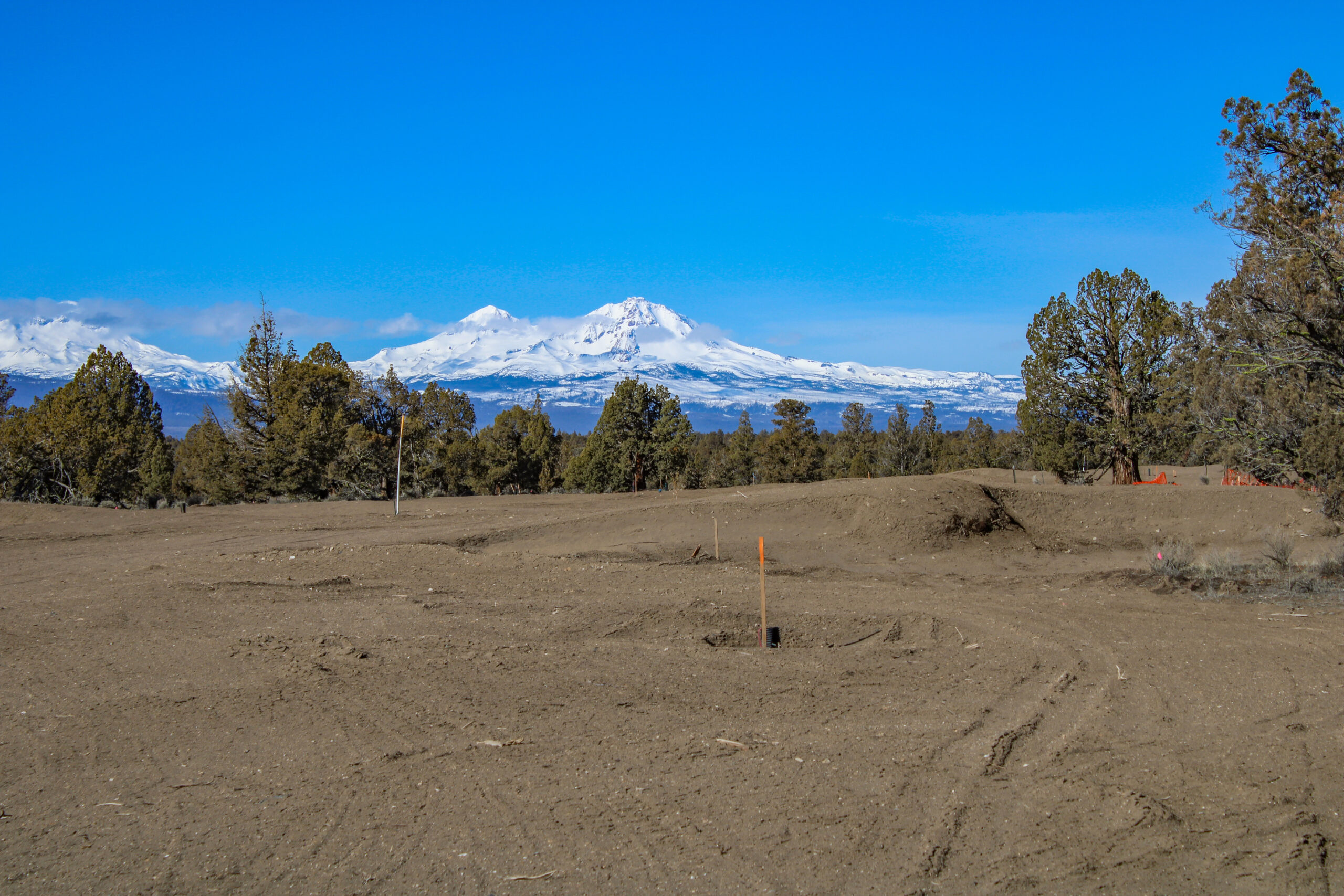
In all seriousness, I have enjoyed adding a new dynamic to the game of golf. Sure, dirt gets in your eyes and nose occasionally and I frequently wonder if valley feaver is in my future (I’m being soft and melodramatic, I know; people have been doing this longer than me, obviously). I am still finding sand in the crevasses of my ears as the wind at Bandon Dunes blew the specs of sand into my side, but I think it’s all worth it; at least that is the way I feel.
There is an interesting dynamic at play when I go on these visits, however. I am no shaper or builder; no architect or construction contractor. I am simply a guy who likes to write about golf architecture, eventually bringing me down this rabbit hole of almost seeking out new sites to go visit for a “Early Thoughts From a Too Early” article, or simply flying the drone for some social media content. I often get asked how I got interested in architecture. The answer is Banff Springs, but more specifically, the combination of playing Banff Springs at a young age and wondering why it was so much better than the local stuff I grew up on, and a friend or mentor, Mike Mezei, who would come back from Bandon Dunes, The Netherlands, or somewhere cool with stories to tell about the courses he played. That seemed fun, and thus, the deep dive began. I wonder what fifteen-year-old me would think about the recent next-level addiction to walking a site for golf, without playing!
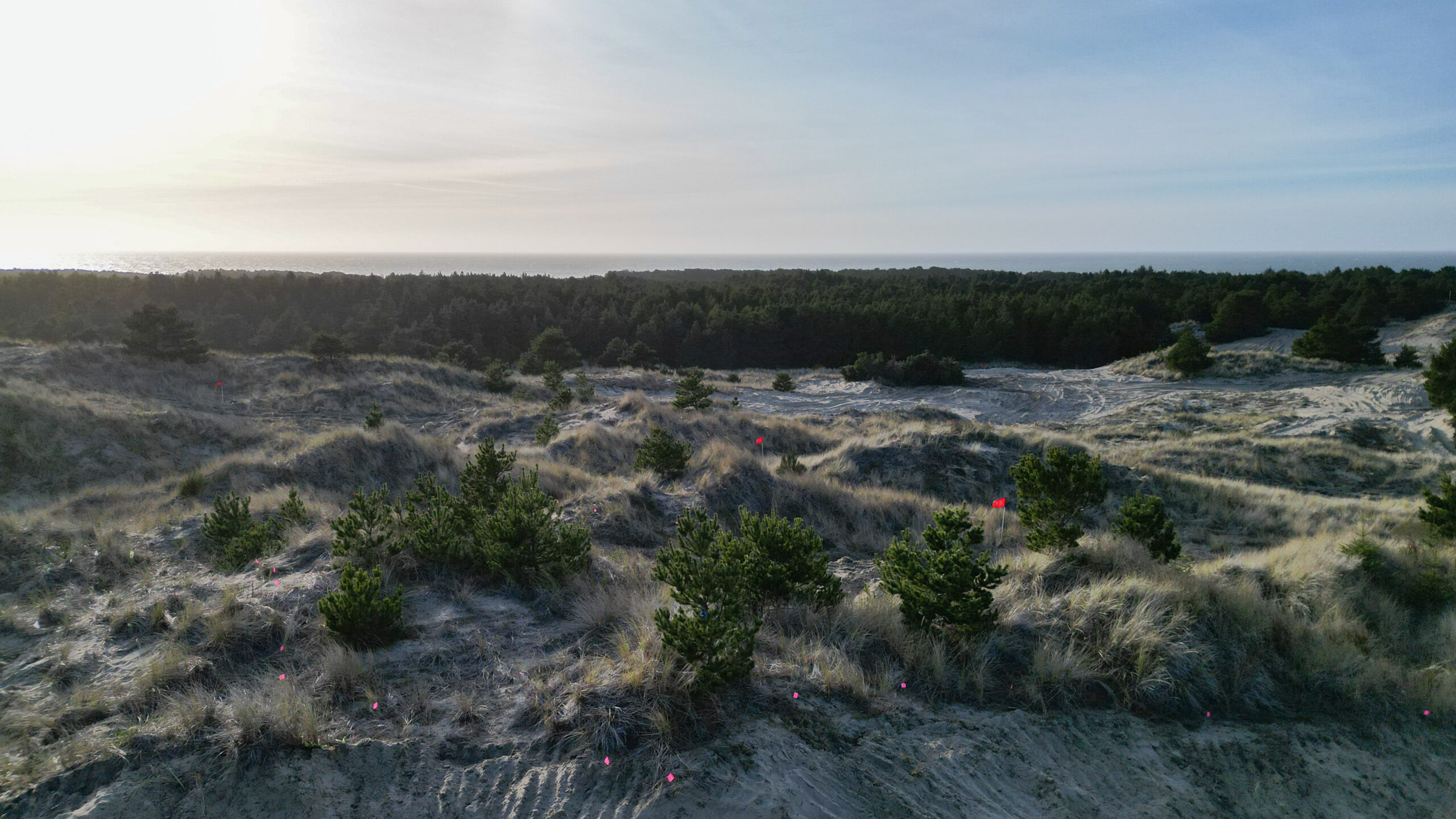
At Bandon Dunes, Keith Cutten is telling me about the ground naturally playing conductor for the symphony of contours that mother nature has provided for the green complexes. They’re not changing anything: no fighting natural elements, they’re taking cues from what wind and water created. Sure, I am able to see the slopes and contours he is talking about, but Keith, or any architect worth listening to, sees it differently than me. I’m looking at it in the general sense or the macro, but Keith is able to tell me the micro, even down to a ballpark on a slope percentage on various occasions. On a separate trip, Keith and I walk a property in the trees, where he tells me his partner Dave Axland fell in love with the site because it has similarities to some sites Maxwell worked on (Axland consults at Prairie Dunes, and I believe worked on Old Town with friends Bill Coore & Ben Crenshaw). I am there to take photos, while Cutten guides me where to shoot: “over there, at those trees” he says. Pointing a camera at a bunch of trees and taking a photo is a perplexing experience for someone just three months ago only saw the above-ground aspects of golf, but it was likely the first time I began to understand how skilled golf architects truly are. I took the photos and had to immediately change the file names so I wouldn’t forget the holes; if I didn’t, they would just be a picture of a random rolling plot of land with trees, natural grasses, and a creek. Keith, however, has it engraved into his brain; he could, and has, walked me through holes over dinner that we walked in the dirt.
My first site visit that I can remember of any significance came at Cutten Fields alongside Jeff Mingay’s renovation of the old Chick Evans golf course which Stanley Thompson lived on in his later part of his life. Christine Fraser was there, too, and we went through the changes. I had seen some renovations before: Les Furber’s debocle of Lethbridge Country Club growing up, and even Jeff Mingay’s renovation of Kelowna Golf & Country Club. In 2018, I walked Point Grey’s three new holes from Riley Johns during my first and only visit to the Vancouver club. Even so, my visit to Cutten Fields was the first of notable visits. It was the perfect way to whet my appetite. I could still what I was looking at, and only a few holes at a time were ripped up. I could see the old holes, while listening to what and why Mingay was doing. A perfect appetizer.
All this to build up to Citrus Farms, the inspiration for this article. My previous two trips have been to a sandy abyss with a broad understanding of the golf holes based on what I knew about Pine Barrens and Rolling Oaks prior. This trip, however, in April 2023, was a big moment: sod was going down.
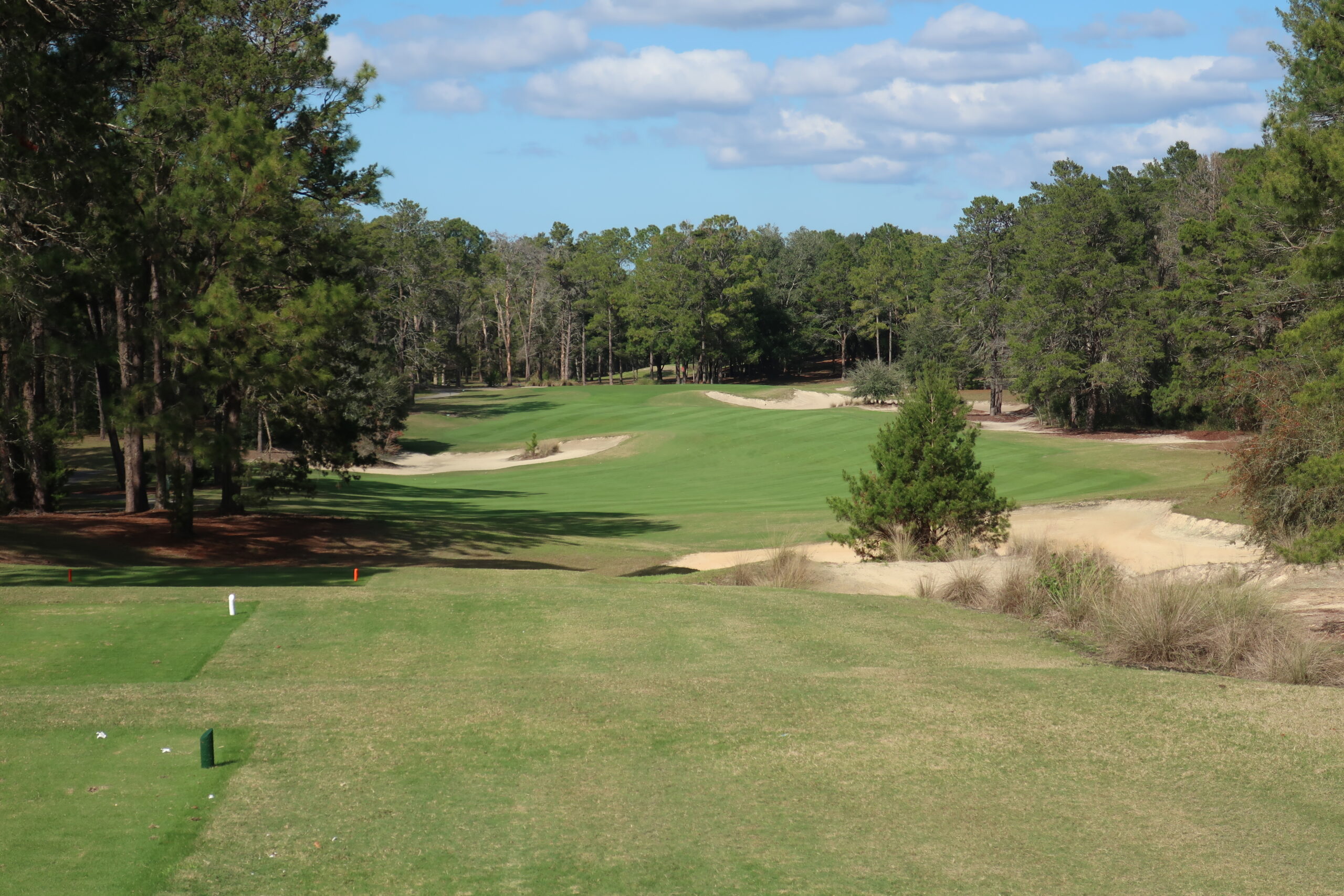
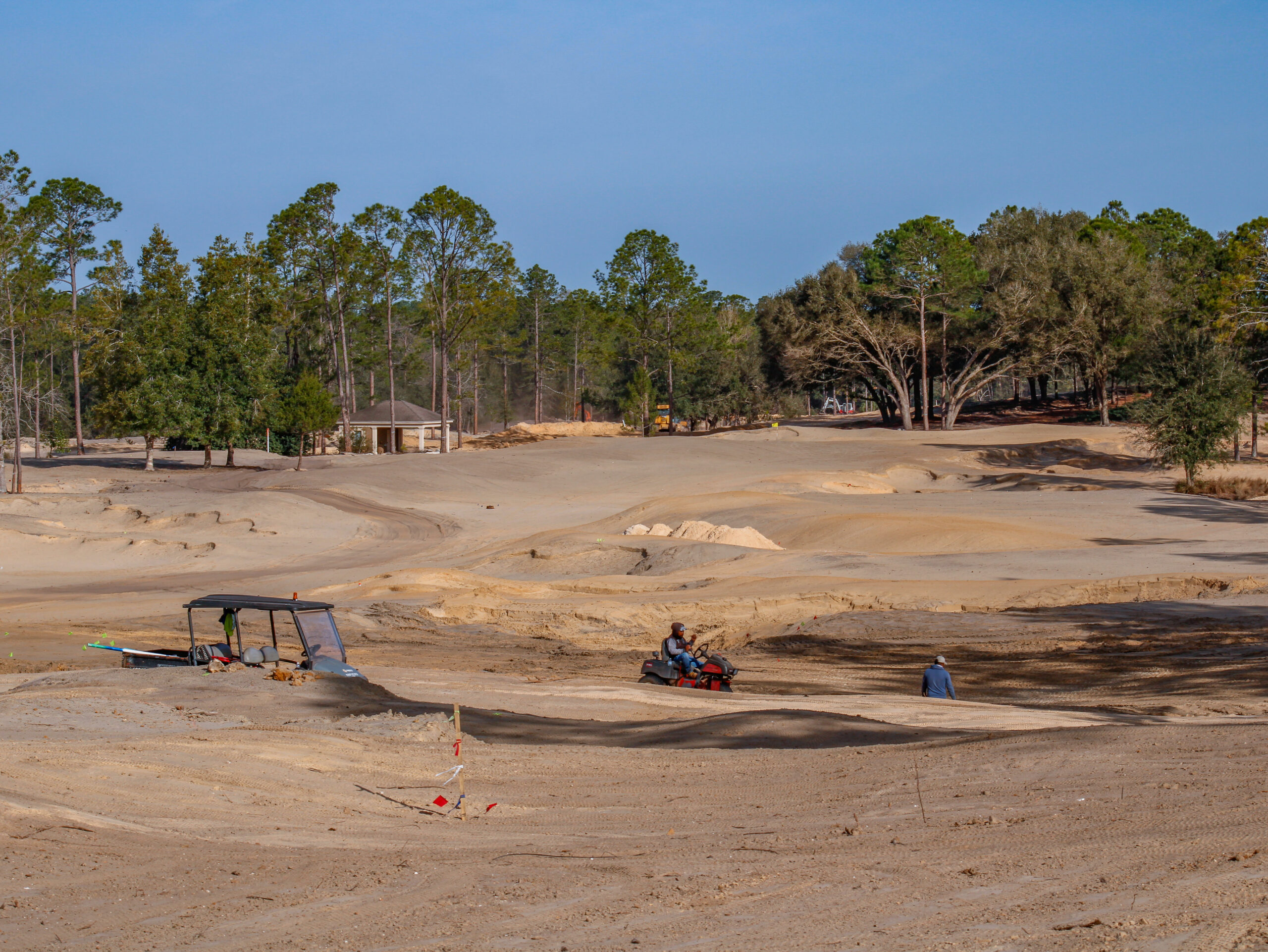
In the sand, I could tell Mike Nuzzo and Don Mohaffey’s “The 21” was a special short course. We toured it on Media Day, stopping at the par 3, 5th in particular and the par 5, 4th on The Ten (the front half of the 21 hole loop). I get the gist and the concepts, and walking the routing comes easy even without a map of the course because it flows nicely. I can see a contour here and a contour there, but mostly the macro or the big slopes or features. The smaller, and I might even say more important, contours become something my untrained eye cannot begin to process how it will play. For these guys, they know the drill; they’ve done it, trained in the field.
Thankfully, they have been laying sod on the first four holes of The Ten: the first two are drive & pitch holes of some four-shot variation, while the 3rd is a shorter 3, followed by a longer par 5. The contours begin to reveal themselves as if they were hiding from me beforehand. The contrast in colours helps make features become familiar, and suddenly, I don’t feel so much out of my element as I did two months prior.
On the first, for example, the middle knob in the green bleeding into the tie in short of the green, dividing the hole west/east is much more obvious, and likewise for the upper shelf in the fairway on the 2nd hole, where the green sits a half club higher than the fairway. I have taken a lot of photos of dirt since September 2022, but The 21 is the first one to have sod down. It felt like seeing an old friend after a long break; grass was down, and I was back in my element.

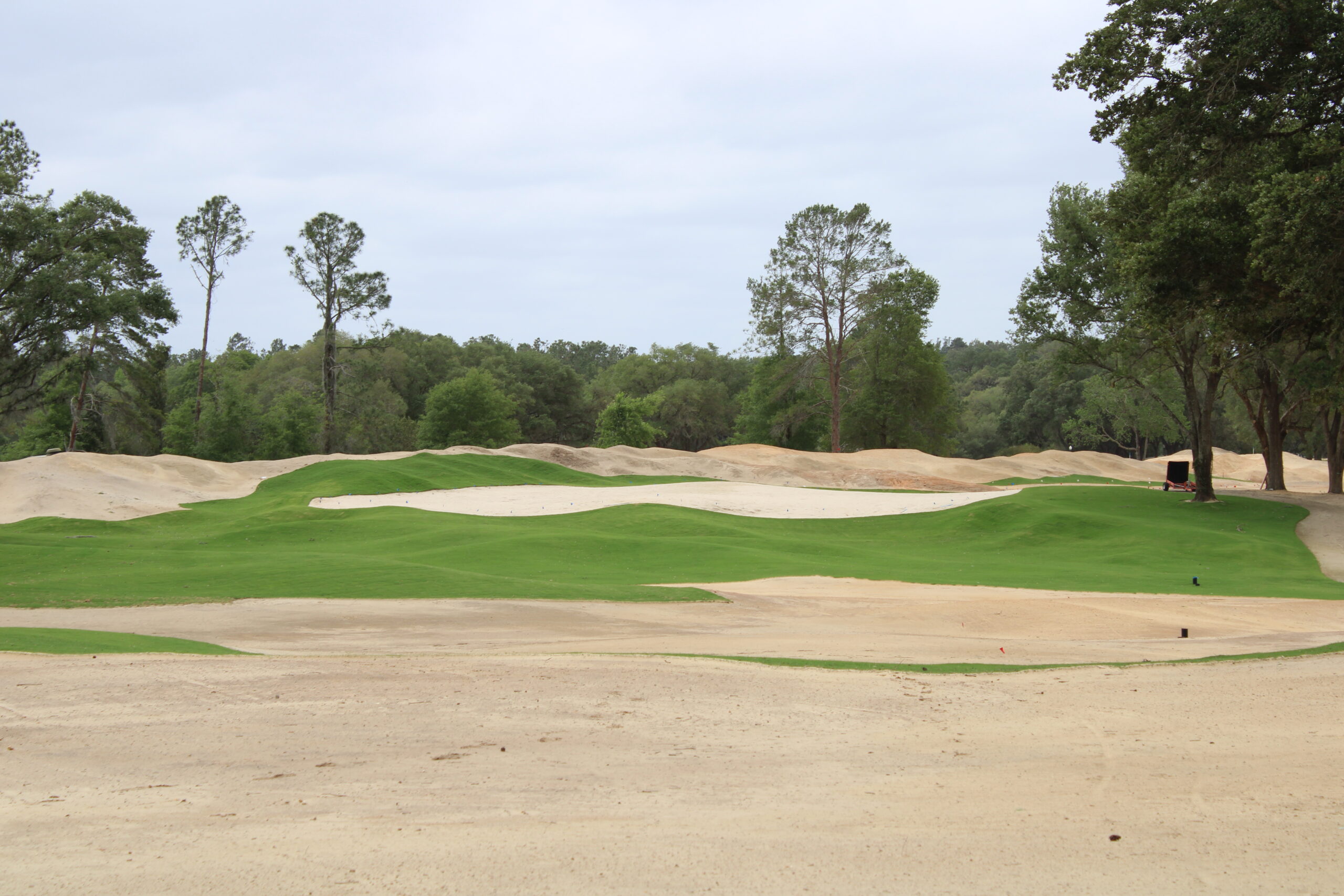
I suppose the gist of such a topic is that these architects, whom build golf in so many various locales, are much better than anyone really gives them credit for. True sicko golfers will drive by farmers fields and imagine a golf hole, but seeing these projects come to life has changed my perspective. Even further, on an undisclosed site visit to a potential golf course site on the eastern seaboard, I scavenged through trees and vegetation, trying to understand what I was looking at. I could tell we were walking up and down some hills occasionally, and if I saw something in the trees with some undulations, I suppose I could theorize and think, “that could be cool in some way.” Yet, the architect was prepared. They knew a rough outline of what they wanted to do and the general principles. Aesthetically, I could see a Pinehurst No. 2/Brambles mix, where hazards are low-profile and into the ground, with vegetation or the sandy soils often bleeding over into the fairway with a wicked set of greens, but they were ready to discuss routing.
Even so, I still ignorantly think I could build golf at some point, but for now (and a loooong time), I’m happy guys like Keith Cutten and Mike Nuzzo are on it; architects like Kyle Franz and Jeff Mingay can see it before the rest of us; Ran Morrissett, Don Mohaffey, and Christine Fraser know good from bad, even without grass. All these individuals have been kind to provide time to chat, talk, or walk throughout a golf course with me at a various property, and a few gentlemen I won’t mention quite yet. But if I’ve learned anything in the past seven months and change (plus a couple one-off instances), it is golf architecture is an art, of which requires true vision, passion, and intelligence. They’re the best in the business, maybe of any business. I’ve hung around a lot of smart people, and none seem to impress quite like an architect, who juggles the in-field work, a bulldozer or machinery, permits, planning, conservation organizations, local authorities and governments, clients, and all while making golf playable for all.
